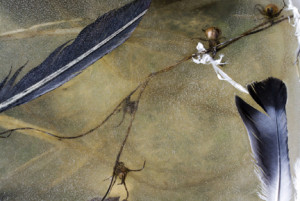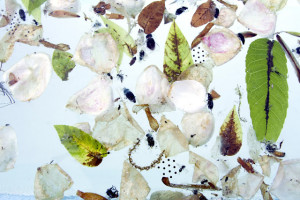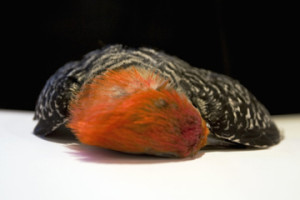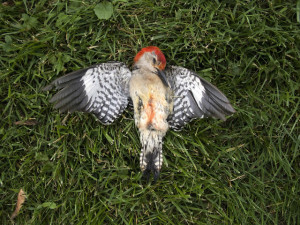Mary Akers: I first saw your beautiful photographic artwork when you opened your studio at VCCA and I was blown away by the subject matter, quality, and the innovation, too. How did you get into photography?
Karen Bell: It’s been a long time. I always had some type of camera – I still own my very first Kodak Hawkeye Brownie. In college, a boy friend – 2 words – was a photo major. He taught me how to process film in a closet in the dorm. My folks were going on a business trip to China – I asked for a camera. That was 1971. And that was the real beginning. I was a Government major back then, with thoughts of going into politics. The 1972 presidential campaign did me in. I was floundering. Tried being an English major for one semester, then took Photo 101. Really liked it. To go further I had to submit a portfolio of images. I did, went home for the summer, came back to visit friends, saw that my name was on the top of the list. Bingo. I’d found a direction.
MA: I’ll say! And a great direction, if your art is any indication.
All art forms evolve, but it strikes me that photography–with the advent of digital images and the ease of their manipulation–may have undergone the most radical changes of any traditional art form in the past fifteen years. Would you care to talk about that?
KB: The more things change… Digital has upended more than the way photographers photograph. It has changed the way many people see the world. Polaroid offered some instant gratification. Digital has made that possible for all. Big exception – Polaroid was always expensive, so some thought went into what you were shooting. Shooting digitally, you can shoot endlessly – and share endlessly. The word “edit” has gone out the window for a lot of people. Sure – if you shoot 100 versions of the same subject you’re bound to get a “good” one. Personally, I miss the lag time: the time when you shot the image to the time when you got to see what you shot. I try never to edit while I’m shooting. I continue to like the pleasure, or dread, when I review my images at the end of a day.
I have too much to say on this, so I”ll stop here.
MA: Your stunning photo-collages from the natural world really inspire me. I adore them. Could you talk a little bit about those pieces? And a related question: How has your art challenged and sustained you over the years?
KB: For years I traveled to photograph. I’m a big city kid, but I love being in environments completely other than what I knew. Then my hip/back started to hurt. It put the kibosh on traveling with my equipment, driving endless miles, hiking, etc. I had to rethink how I worked. I can’t say exactly when I started looking down – but that’s sort of what happened. I”ve always been fascinated with insects, birds, flowers, etc., and back in the old black and white days, I would do an occasional still life, but mostly I was out THERE. With my changed physical abilities, I started to bring THERE home. VCCA has been an enormous part of my creative life for more than 20 years. The surroundings are so stimulating. The concentration of a group of people working tirelessly on their own creative endeavors has always made me reach down deep and find a way – whatever it was. It was at VCCA where I found my first bird. There is so much to see/observe without too much physical ability at Mt. St. Angelo – so I started to walk, wander, collect. I would bring my findings back to my studio and see what happened. Now that i’m feeling healthy again – I am back out THERE – but still collecting, wandering, bringing stuff home to see what happens. I liken myself to a nerdy kid picking things up, turning them over in my hand, just because.
MA: Margaret Atwood, one of my favorite writers, has said that in the discussion of whether or not to fund The Arts in public schools, we only need to consider the things that children explore and do naturally, on their own, as they grow. What do they do? They sing, draw pictures, make up stories, dance. Creativity is at the core of what makes us human. What are some of your earliest memories of being creative as a child? Have they stayed with you in later life?
KB: Ah, Margaret Atwood. The 100 year writer. I went to sleep away camp for more years than I can remember. The usual stuff- lanyards, ashtrays – shows my age…I loved shop in high school. My memory is I had to “beg” to take it instead of another round of Home EC. where we never got to finish whatever it was that we cooked, and Mr. Berman, my Earth Science teacher would come in and eat it regardless. My school art experience was nothing memorable. I went to public school in Brooklyn. Class sizes were enormous. Carving with ivory soap stands out. And, I played piano. My parents weren’t artistic, though if life had been different for my father, I think he would have enjoyed being creative. I was a shy kid. A very shy kid. My mother tried to encourage (push) me to take art classes at the Brooklyn Museum, but I would never go. In hindsight, I wish she had pushed harder.
I loved art, but didn’t understand why. I loved music – all kinds. It was embarrassing to love classical music in the 60’s. It wasn’t cool. I still love music – all kinds. I have a much better understanding of art now that it has become my life, but I still don’t understand a lot of what I see. The difference is now I enjoy the challenge instead of being afraid of making a fool of myself.
And – I always had a camera.
MA: And finally, because we are a themed journal, what does “recovery” mean to you?
KB: Recovery. Healing. Getting on with it. Picking up the pieces when you don’t know what to do with the pieces and figuring out pieces are good, too.
Recovery – not letting the bad, the sad, the miserable get you down so low you can’t find a way up and out again. My art is my constant recovery. It’s not always easy to remember that, but when I do, all is well in my world.





